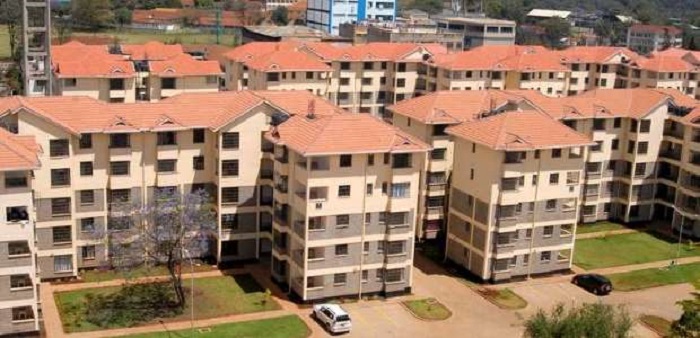The Sustainable Development Goals (SDGs) is already in its fifth year since Nations of the world including Ghana signed on to it in September 2015.
This means that the global community has exactly 10 years ahead for all nations, be it, developed or developing to achieve the targets outlined in the blueprint.
Is Ghana and for that matter sub-Saharan Africa on course to meeting any of the targets? This is a million-dollar question that needs to be answered, given what is on the ground in terms of efforts and implementation strategies.
Let us focus for instance on the Built Environment (BE) because of the huge impact it has on the environment, raw materials use and on the physical and economic life of people.
It is reported that activities of the BE industry contribute about 40% of carbon emissions into the atmosphere. This means, mitigating activities within the BE has huge potential for reducing Green House Gas (GHG) emissions and subsequently inure to meet the SDGs, especially; goal 7 seeking to ensure affordable and clean energy, goal 11 for sustainable cities, and goal 13 on climate action.
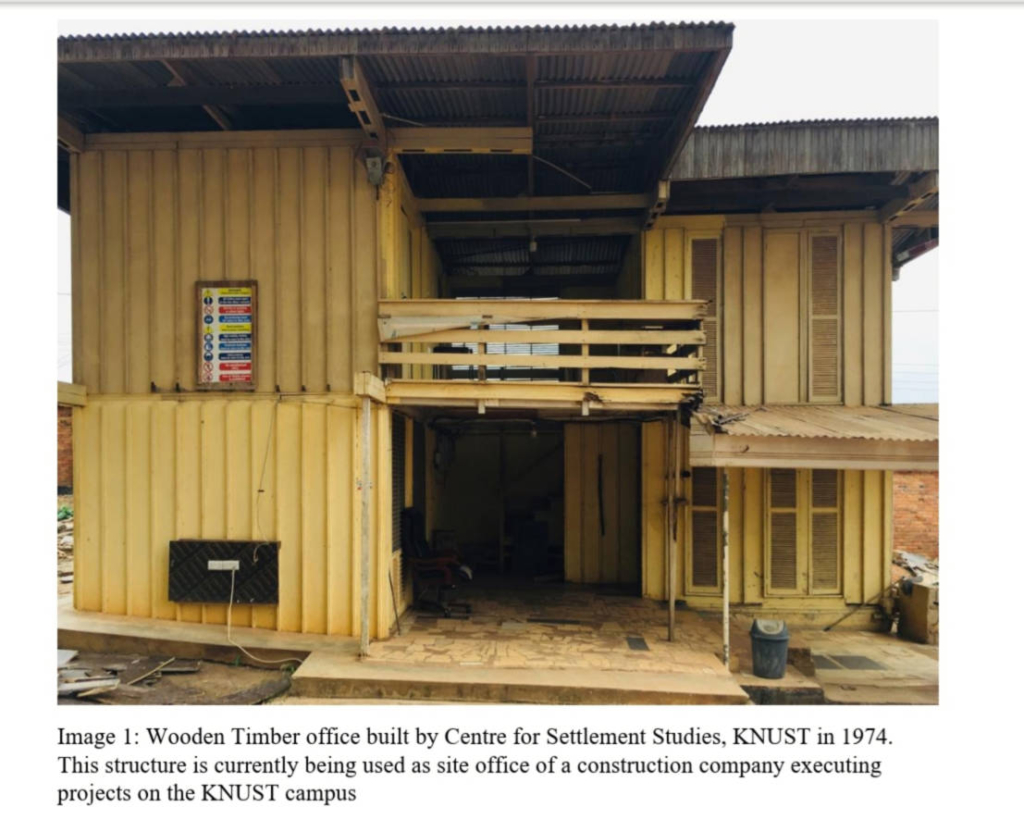
What has Ghana done so far in the BE industry? Well, as it is currently, it appears that apart from the “lip service”, one is not exactly aware of any consisted and pragmatic implementation agenda/strategies in place.
Suffice it to mention that, while the concept of sustainable development drives on the triple anchor of economic, social and environmental (ESE) benchmarks, historically it takes its root from the economic thinking of the classical economist, Thomas Malthus, who is credited to have first prompted a debate of the link between the earth’s limited natural resources and population growth, in his seminal works in the 1800s.
His famous theory of population growing at a geometric rate while subsistence was to grow at an arithmetic progression, became highly popular during this period.
Since then, quite a lot indeed has gone on, leading especially into the 20th century. Alas! 1972 was to be the era that was to spur on influential discussions questioning whether the earth’s natural resources were actually being used in a sustainable manner.
Not too long after, in 1980, the term Sustainable Development (SD) was coined as a World Conservation Strategy (WCS) by the UNEP. Subsequently, the Brundtland Commission report of 1987 generated renewed interest on the SD agenda in response to poverty alleviation and safeguarding the environment.
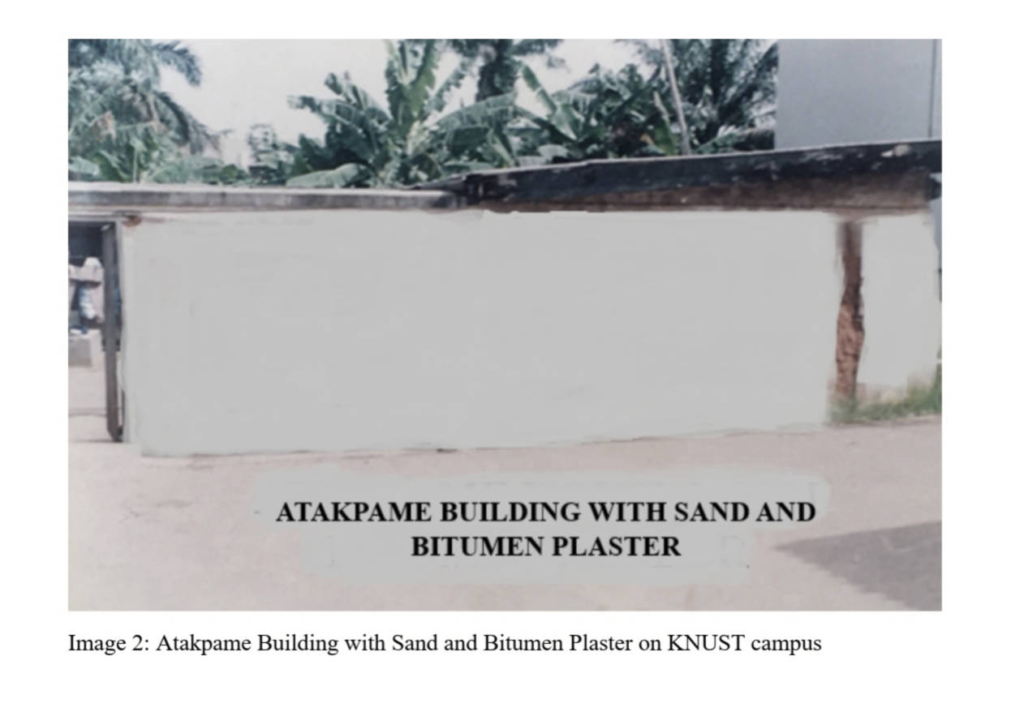
The highlight, one may opine, was to be realised in 1992 during the Earth Summit in Rio (Brazil) which invigorated the global attention for Nations of the world to begin to take SD in earnest agenda. Thus, it could be said that, the SDGs which have now become the blueprint guiding the new urban agenda take their roots from the Rio agenda of 1992- code-named “Agenda 21”.
Within the BE, the term sustainable construction (SC) emerged synonymous towards meeting the emerging sustainable development programmes.
According to the Department of the Environment, Transport and Regions (DETR, UK), sustainable construction is largely about encouraging the increasing use of recycled materials, lean construction, efficiency in renovation and adaptation, eliminating pollution and ensuring efficiency in the use of water including quality assurance.
Thus, in essence, sustainable construction is about being responsible and resource-efficient towards improving the health and welfare of local communities and society. That indeed underlie the driving agenda for achieving the all-important SDGs.
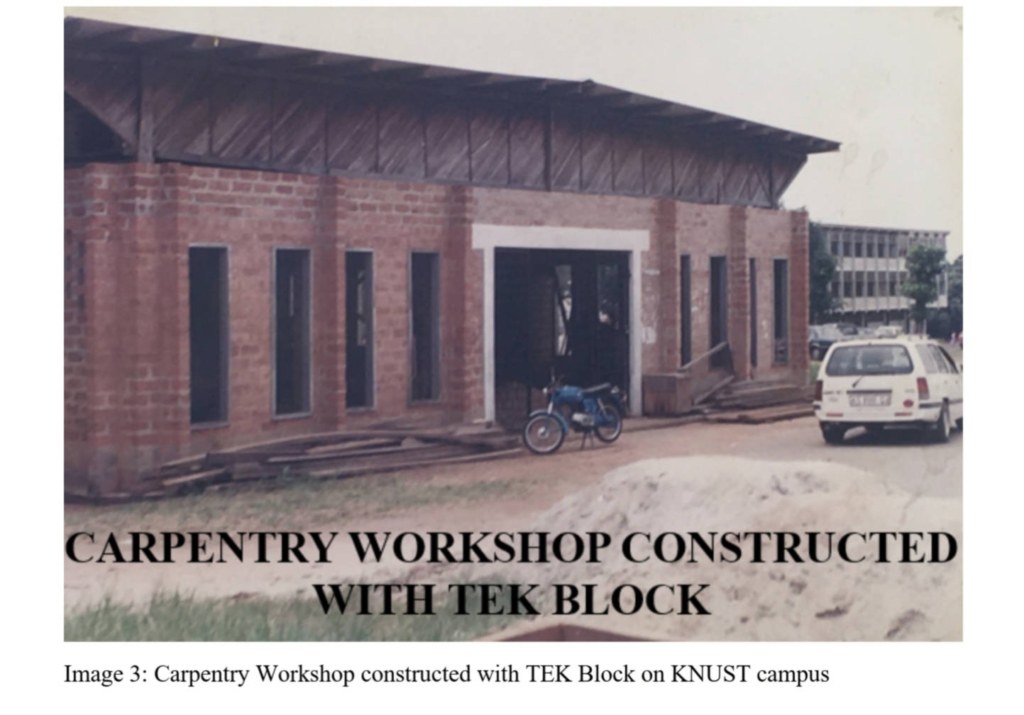
Interestingly, while the concept of the SD agenda was at its threshold in the early 1970s, many –sub-Saharan African economies including Ghana had been hard hit by the Global Oil Crisis.
The construction industry was severely affected as cement run short of supply and prices of building materials mainly imported skyrocketed. Ghana thus embarked on technology R&D towards upscaling laterite based technologies for housing and building projects.
The technology involved the use of 5 to 10% cement to laterite and compressed into blocks called landcrete Tek-Block. So-called Tek-Block because the Centre for Settlements Studies, then Department of Housing and Planning Research of the KNUST was at the forefront of these R&D projects.
With good and appropriate designs, it was possible to build resilient structures in landcrete Tek-Block many of which are still functional after 50 years of use (see images 3 to 8 below). Improved laterite based atakpame blockwall construction was also part of the R&D technology (image 2).

It is to be noted that, extensive studies by the Building and Road Research Institute (BRRI) indicates that, over 70% of the land cover of Ghana is lateritic in nature.
Laterite engenders the efficient use of finite resources, minimize pollution, and is environmentally friendly and also a renewable natural resource. Laterite based technologies are therefore potentially responsive to the ideals of meeting most importantly; SDGs 7, 11 and 13.
The technologies developed using Tek-Block has the potential for reducing house cost by about 30% or more. The improved atakpame blockwall also has the potential of achieving approximately 60% cost savings in house building.
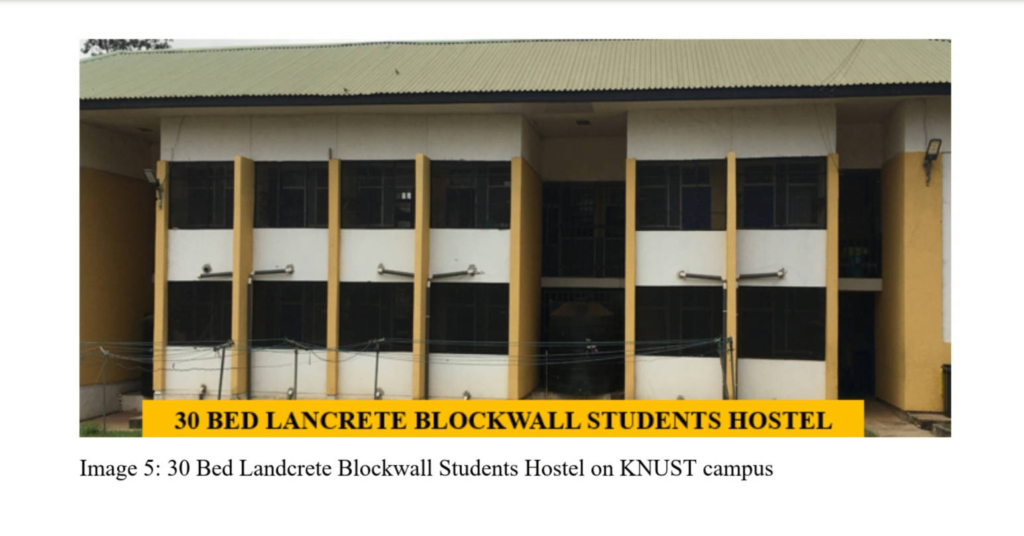
The Centre for Settlements Studies, KNUST also experimented in timber structures which have performed functionally well since 1974 to date (see for example image 1). Presently, wooden sharks are dominating slums in many Ghanaian cities. This prototype timber structure could have served purposely in providing decent houses to many needy Ghanaians.
Apart from the lateritic based materials from KNUST, other organisations such as the Forestry Institute of Ghana (FORIG) did a lot to promote the wide use of forestry and agricultural waste, in producing elements such as particle boards and chipboards from sawdust and wood-wool.
One is easily reminded of the beautiful particleboards produced by Novotex in the 1980s. They were indeed beautiful to the eye, when used, for example, for ceiling and panelling. Novotex used to be located on the Main Accra- Kumasi road at Nkawkaw in the Eastern Region of Ghana.
During the same time, the BBRI also did a lot in helping to promote lateritic clay materials such as Bricks. In 2010, I had the privilege of attending a national workshop organised by the Ministry of Environment, Science, Technology and Innovation (MESTI), seeking to increase the use of bricks for house construction by 60% by the year 2015.
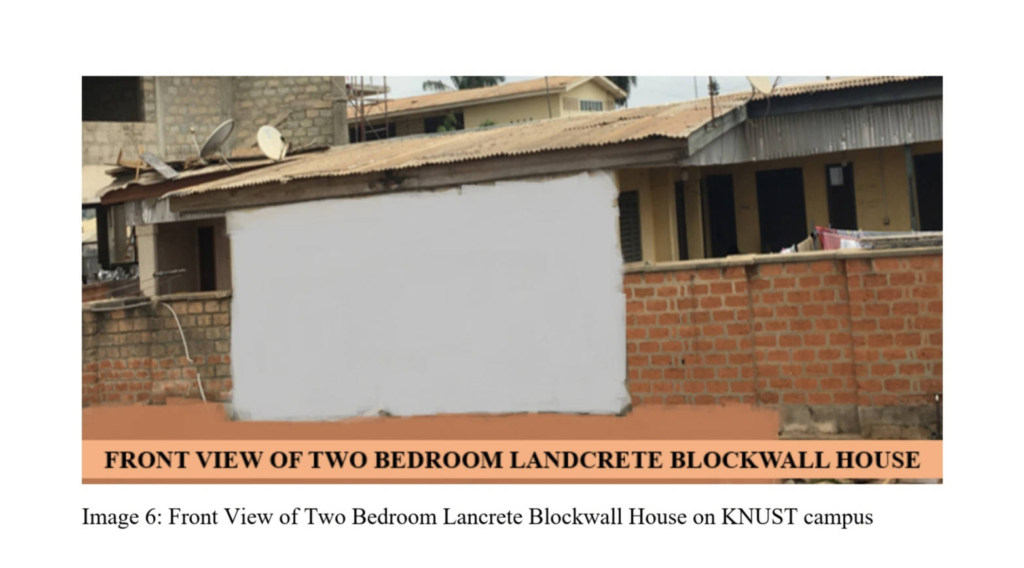
We are now almost in the last quarter of the year 2020 and your guess would be as good as mine. Is it a case of mere lip service and no action? The corollary is that, if these sustainable technologies had been pursued and sustained in earnest as it began in the 70s, it could have perhaps positioned Ghana at the forefront, as a leading sustainable development economy in the 21st century.
However, Government support and policy directions have not been particularly proactive which created latency in the R&D projects in the early 1990s. Public acceptance of the local technologies has also been receptive, even though, there is enough scientific evidence that the technologies are workable.
The heavy reliance on conventional materials when equally good substitutes could be obtained from laterite, forestry and agriculture waste undermines all effort towards achieving the SD agenda in the BE industry in Ghana.
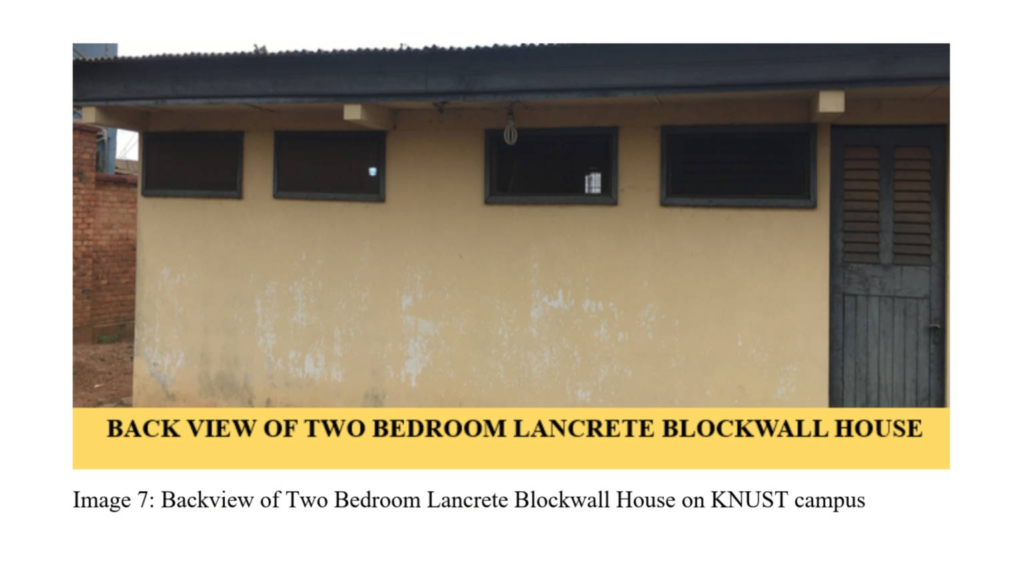
The UN-Habitat in the Ghana Housing Profile reports that Ghana government is presently finding it difficult to deal with sand mining and deforestation, obviously because of the heavy dependence on conventional materials such as sand and timber.
There is also a heavy reliance on the increasing use of for instance glazed windows over the environmentally friendly Louvre blades, obviously engendering the greenhouse effect.
The increasing use of Air-conditioners (ACs) also is putting pressure on the national grid and potentially escalating carbon emissions. Clearly, this does not sound like Ghana is keen on championing the SD agenda in the BE industry.

It is a fact that sub-Saharan economies have always struggled to be competitive in the global market because of the over-reliance on imports. One of the strategic areas that the BE can use to engender import substitution may be to encourage more emphasis on the use of eco-materials and sustainable technologies.
With the rich natural resource base of Ghana, there is the opportunity to develop eco materials and sustainable technologies from a wide range of options.
If these technologies are well perfected to international standards, it is likely to create unique products reflecting the rich ecosystems in Ghana. Being unique means that, we may begin to find construction materials from Ghana crossing boundaries onto the international market, especially as the inter-continental free trade is now here with us.
Thus, the Ghanaian BE industry should perhaps begin to reposition itself in terms of the varied products it can offer to the sub-regional market through improved local technologies.
The BE industry has the potential to take the lead in using eco materials and sustainable technologies to internationalise the Ghanaian Construction Industry.
However, it looks like Ghana might have lost the opportunity of this leverage several years ago when it abandoned the trajectory it started on in the 1970s in developing sustainable materials. Perhaps! One may say that all is not lost yet if we can quickly re-organise the industry with deep-seated policies and pragmatic implementation agenda.
*****
The author is Professor Divine Ahadzie the Head, Centre for Settlements Studies, KNUST
Latest Stories
-
‘It is false’- PMMC refutes claims of politicians smuggling gold from Ghana
6 minutes -
2 million NPP supporters did not turn up to vote – Kabiru Mahama
9 minutes -
IPR Ghana congratulates citizens for peaceful election, calls for unity
46 minutes -
Bawumia’s 8 minutes elite ball that zapped the energy of trigger happy politicians
2 hours -
It will be a betrayal if National Cathedral saga does not feature in ORAL’s work – Ablakwa
2 hours -
‘It’s unfortunate we had to protect the public purse from Akufo-Addo’ – Ablakwa on ORAL Team’s mission
2 hours -
Congo lawyers say Apple’s supply chain statement must be verified
3 hours -
Stampede in southwestern Nigerian city causes multiple deaths
3 hours -
Tens of thousands without water in Mayotte as curfew brought in
4 hours -
ORAL: We won’t witch-hunt, we’ll focus on transparency, not revenge – Ablakwa
4 hours -
Attempted robbery: Accused claims he carried cutlass for protection
4 hours -
Excavator operator jailed for stealing
4 hours -
African fans age-shame me for putting on some outfits – Tiwa Savage
5 hours -
Tiwa Savage criticised by female fans for stance on cheating in relationships
5 hours -
Bank of England expected to hold interest rates
5 hours

